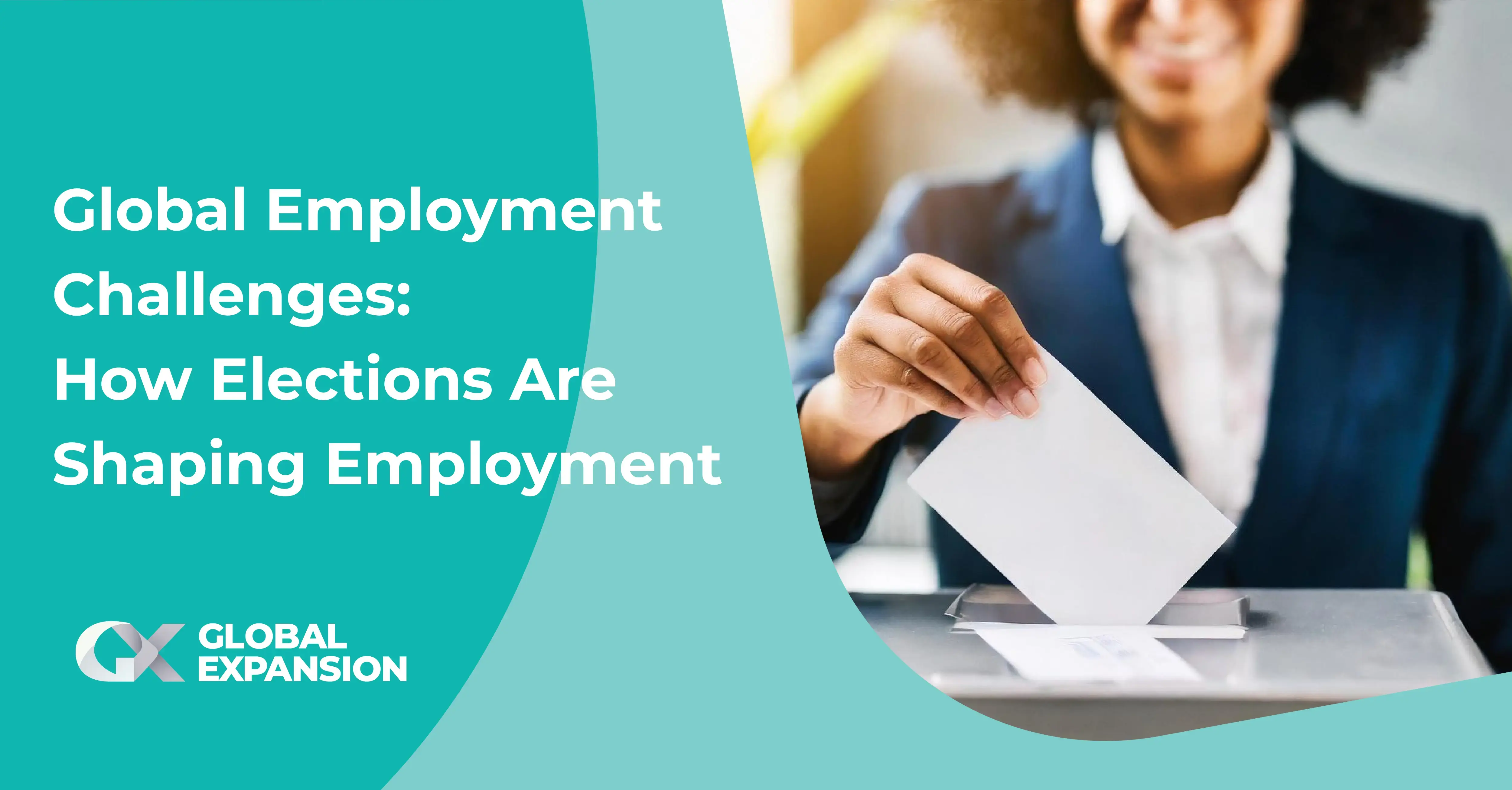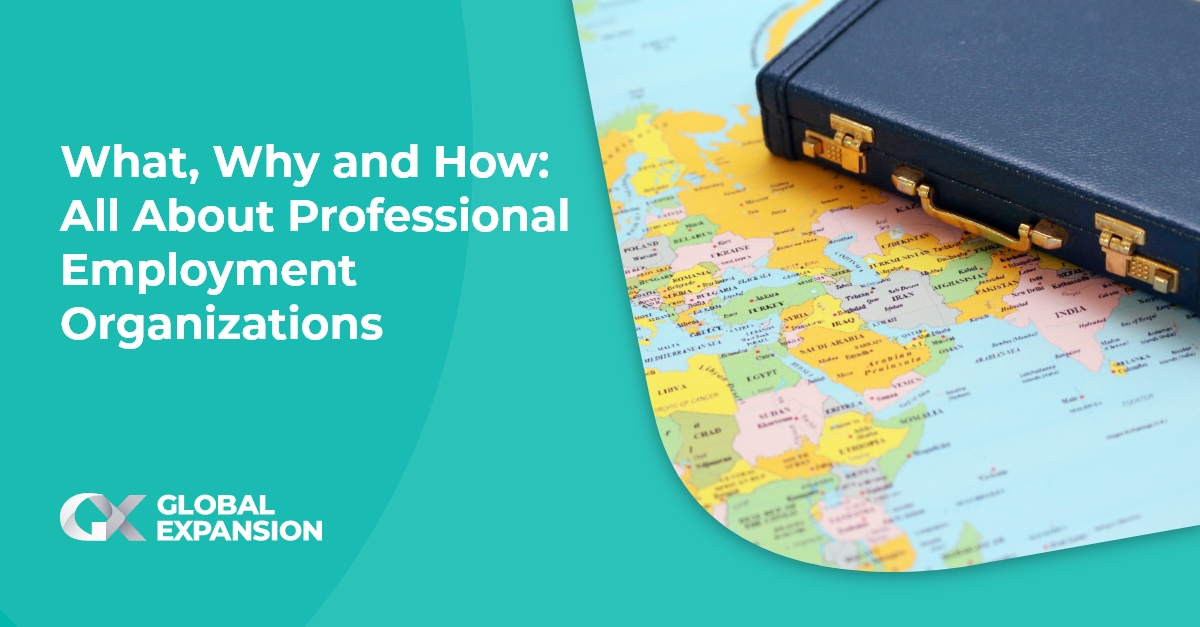Explore EOR Operating Models for International Expansion

Knowing what an Employer of Record (EOR) is can be vital for successful international expansion.
An EOR service helps you hire global talent without needing to set up any legal entities in different countries of your operations.
An EOR manages the challenges of employment, including payroll, compliance with local labor laws and taxes, and working as the legal employer on your behalf.
But does an EOR have a presence in every country worldwide? Most EOR providers do not have legal entities in every country, but they operate through a combination of different sets of EOR models, namely direct, indirect, and hybrid models.
These models are different from each other, and their choice depends on your specific business needs, the level of flexibility or control needed, and the regions you target.
This article will help you understand what these models are all about, how they work, their benefits, flaws, and myths related to these models, and how to choose the most appropriate EOR model that works best for your business.
Types of EOR Models
Direct Model
The direct model is one of the vital models used by the employer of record service partners. It involves an EOR that operates in the country of your desired business operations. This means that the EOR hires local nationals directly to meet your business needs effectively.
In this model, the employer of record service is updated on the local labor laws and regulations of the country of operation.
Indirect Model
The employer of record service providers doesn’t have its legal entity in the country of operation in the indirect model. Instead, they partner with a locally-based third party to hire local talent on behalf of their clients.
This model has a broad geographic reach and allows for expansion into different countries. However, the effectiveness of this service depends on how the EOR manages to ensure flawless service with its local partners.
Hybrid Model
The hybrid model combines the advantages of direct and indirect models to ensure flexibility and extensive coverage for the client companies. It helps to cater to the specific needs of several countries and offers a versatile solution for international expansion.
However, it needs careful management of different operations across the nations. It uses a mix of legal entities and partnerships with local third-party entities to help organizations hire employees for their client companies.
Advantages and Disadvantages of Each Model
The selection of an appropriate EOR operating model is a must for embarking on an international expansion. It is a vital step that can impact the success and efficiency of your global expansion plans.
However, every model has its own merits and demerits, which are mentioned below:
Direct Model Advantages
- Greater Control: The direct model allows for more control and visibility of employment practices, ensuring they align with your company's standards and objectives.
- Local Expertise: EORs with a direct presence in a country bring valuable local legal and cultural knowledge, ensuring compliance and cultural appropriateness in your operations.
- Prompt Issue Resolution: Direct models enable clear communication and lead to prompt resolution of issues or concerns that may arise during the employment relationship.
- Lesser Compliance Risks: The direct model has updated knowledge of the local laws and regulations, ensuring that all legal requirements are met.
Disadvantages of the Direct Model:
- Limited Geographic Coverage: The direct model has a key limitation in its reach. It can only work in countries where the employer of record service provider has a legal entity, limiting your expansion options.
- Higher Costs: The direct model may incur higher costs as compared to other models due to overhead expenses of maintaining legal entities in each country, including administrative expenses, compliance-related costs, and legal fees.
Advantages of the Indirect Model:
- Broader Coverage: The indirect model enables the businesses to expand into countries where the employer of record provider has no legal entity or a direct presence through partnerships with local partners.
- Flexibility: The indirect model offers flexibility to the client companies to enter into new markets with an opportunity to test markets before making significant investments.
- Cost-effective: The indirect models don’t maintain their legal entities everywhere, so they are cost-effective.
Disadvantages of the Indirect Model:
- Complexity: The indirect model of EOR has some potential communication challenges to manage multiple partners across different countries, making it a more complex model to manage.
- Less Control: The indirect model provides lesser oversight into the employment process and could result in less control over the overall process.
- Variable Service Integration: The indirect models depend upon the third-party entities and its effectiveness depends upon the ability of the EOR to manage its tasks. Inconsistencies are more likely to happen if the partnerships are not well integrated.
Advantages of the Hybrid Model:
- Customized Solutions: It helps client companies with a customized strategy for different markets, using direct operations in some countries and leveraging partnerships in others for a comprehensive global reach.
- Wide Coverage: The hybrid model enables EORs to provide a wider range of services and coverage to the client companies. They leverage their legal entities in countries where they enjoy a sound presence and expertise whereas partner with local entities in the countries where they cannot set up their legal presence.
Disadvantages of the Hybrid Model:
- Inconsistencies: The hybrid model can create inconsistencies in client experience, as the control, communication, and service quality may differ across the countries.
- Complex: Managing different types of employer-of-record models across a range of countries can be challenging for EORs. It requires robust processes and clear communication to ensure seamless service delivery.
How to Choose an EOR Model
Choosing an appropriate EOR model requires an approach that not only meets your business needs but also aligns with your long-term business strategy and expansion plans. The following steps can help you make an informed decision and make a reasonable choice:
Step 1: Evaluate Your Business Needs
Assess your business expansion goals and the specific hiring needs they entail. This step explores the key reasons why you want to expand your business beyond borders: are you planning to enter a new market for robust market presence, test product viability, or talent acquisition? Each goal may require a different approach to hiring global talent and a different EOR model.
For example, if you want to hire employees in a tech-savvy market, you should prioritize an EOR model that ensures sound hiring and prompt onboarding services. You can document your business goals and associated HR needs and filter through EOR models to select the one that suits your business the most.
Step 2: Understand the Footprint of Potential EOR Partners
Once you identify your business goals, gauge the operational footprints of the potential EOR partners in your specified regions. This step helps you understand where they operate and how effectively they perform regular operations. To do so, you may proceed by considering the following:
- Ask relevant questions to gain clarity on the process, such as:
- Does the EOR maintain a legal entity in the target country or rely on local service providers
- How do they align with your business goals?
- How would they assist you with control and flexibility?
- You may go through the case studies and unbiased third-party-based client testimonials for detailed and meaningful insights into their track record.
- Analyze their array of services in the target countries.
Step 3: Consider the Long-Term Implications of Each Model for Your Global Strategy
The next step encompasses considering the immediate benefits of each EOR model and assessing their long-term implications for your global strategy. This is how you can determine each model’s scalability, adaptability, and flexibility to help you attain your business objectives in your targeted regions.
It’s crucial to know how quickly each EOR model can adapt to changes in your planning. An indirect or hybrid model can be more adaptive to entering or exiting markets swiftly than a direct model.
It is also essential to know whether the employer of record model can support and scale up your business operations smoothly or not.
Analyze these models to find out how they respond to new opportunities or business challenges. The market is ever-evolving, and your choice should support your business without any disruption or delay.
Following the steps mentioned above can help you make an informed decision about your global expansion. The selection of an appropriate EOR model can help you position your business and adapt quickly in the worldwide marketplace.
Simplify Global Hiring with Global Expansion
If you plan to enter global markets, connect with Global Expansion, to simplify global hiring.
We provide a flexible and compliant solution for fast-growing global teams to expand their workforce globally. We handle compliance, payroll, and benefits administration and ensure a robust global payroll and global immigration service as your EOR partner.
Contact us today to learn more about how our global employer of record service can transform your global hiring experience.
Subscribe to our blog
Receive the latest GX blog posts and updates in your inbox.





